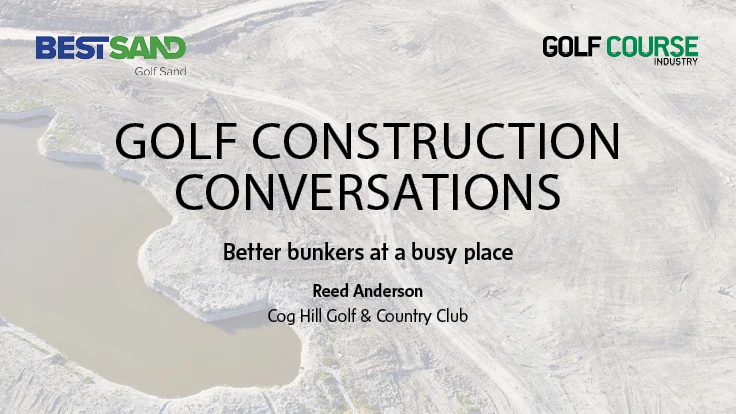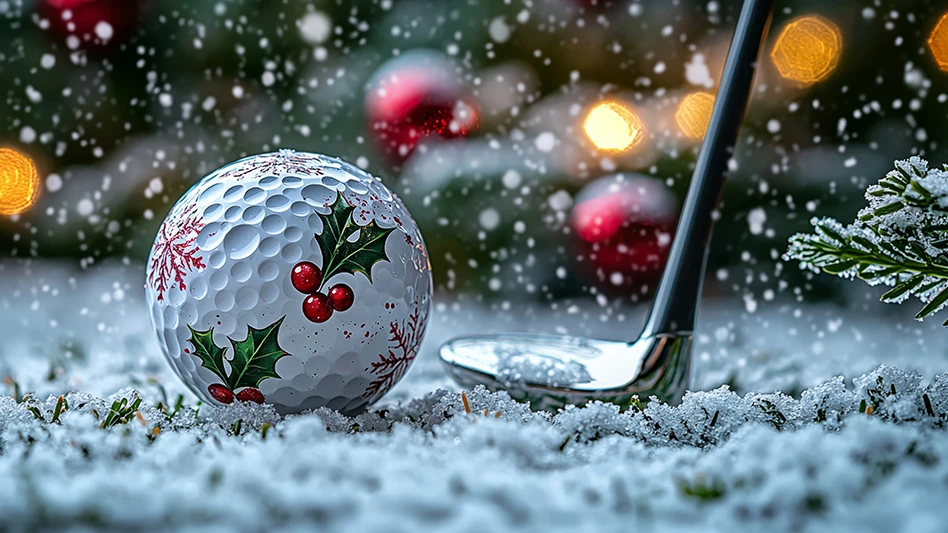
.jpg)
Budget
 Overall, the average superintendent non-capital operations budgets rose nearly $46,000 over the last three years, from $651,392 in 2012 to $697,000. And when compared to 2014, nearly half (49 percent) of superintendents expect to be working with a larger budget in 2015. Only 17 percent anticipate a smaller budget.
Overall, the average superintendent non-capital operations budgets rose nearly $46,000 over the last three years, from $651,392 in 2012 to $697,000. And when compared to 2014, nearly half (49 percent) of superintendents expect to be working with a larger budget in 2015. Only 17 percent anticipate a smaller budget.
Private courses, according to the data, experienced the greatest boost in their average operating budget over the last three years, reporting an increase just over $91,000. Regionally, Midwest supers were below the overall average, with budgets of around $553,000; and those in the Northeast fared the best with budgets around $800,000, followed by those in the South ($771,000) and the West ($740,000), according to the data. And when compared to the previous year, 61 percent of private courses plan to work with a larger budget, as well as 60 percent of courses out West. On average, that increase is between 1 percent and 9 percent, according to the data.
Fungicide spending remains superintendent’s most expensive budgetary line item. Respondents expect to surpass $34,000 in average fungicide spending in 2015, a slight bump over the $33,400 budgeted three years ago. Private courses expect to spend more than $49,000 on fungicides this year, up nearly $5,000 when compared to 2011. Northeast superintendents plan to spend the most on fungicides, budgeting more than $58,000, followed by Midwest supers ($36,600), southern supers ($28,800) and those in the West ($11,300).
However, despite the price tag, fungicide spending doesn’t rank as a top budgetary concern. In fact, “chemical spending” ranks fourth among all respondents’ top-five concerns, and breaks onto the list only in the Midwest and South.
“Labor” and “equipment replacement” held the No. 1 and No. 2 spots respectively except for in the Midwest where they were flipped. With regard to equipment replacement spending, the budget numbers indicate that superintendents are budgeting less on mowing and cultivation equipment in 2015 than they did in 2012 ($31,300 vs. $37,644, respectively), which may contribute to this anxiety.
The biggest difference, according to the data, is the nearly $13,000 drop in spending among private courses.




Super Attitudes
 A lot has changed in the last decade, including how people view the vital role superintendents play not only on their course but in facilitating the golf experience. Nearly two-thirds (65 percent) of survey respondents cite a change in attitude and perception for the better. Only 10 percent of respondents believe that attitudes toward superintendents have worsened in the last 10 years.
A lot has changed in the last decade, including how people view the vital role superintendents play not only on their course but in facilitating the golf experience. Nearly two-thirds (65 percent) of survey respondents cite a change in attitude and perception for the better. Only 10 percent of respondents believe that attitudes toward superintendents have worsened in the last 10 years.
Likewise, an overwhelming majority of respondents (95 percent) believe membership and ownership supports them in their endeavors.
Lack of new players remain the game’s primary challenge, according to superintendent respondents. However, secondary concerns varied geographically, with speed of play a concern among 45 percent of all respondents, but dealing with a “saturated market” was an issue in the South and “water pricing and availability” a significant issue with superintendent respondents in the West.

Methodology
During the last quarter of 2014, Golf Course Industry contracted with Readex to assist in the creation and to facilitate the distribution, completion and computation of State of the Industry survey that examined superintendent trends and attitudes on a variety of topics.
GCI had 569 superintendents or superintendent-equivalent personnel of 18-hole facilities from around the U.S. complete the survey. As an added incentive to complete the questionnaire, GCI committed to making a substantial donation to the Wee One Foundation, a charity group started in memory of Wayne Otto, CGCS, that assists superintendents and other turf professionalism in need.
For the purpose of this report, data was broken down beyond "all" responses to include analysis by:
- Private vs. Non-private – Private course superintendents made up 43 percent of all respondents, while public course superintendents made up 57 percent. "Non-private" included public/daily fee (23 percent), semi-private (15 percent), resort (5 percent) and government/municipal courses (14 percent).
- Geographic region – Respondents were broken down by their location: Northeast (19 percent of total respondents); Midwest (33 percent of total respondents); South (31 percent of total respondents); and West (17 percent of total respondents. See the map for which state belongs to which region.
- Non-capital ops budget – Respondents were also categorized by how their 2015 non-capital operations budgets compared to the average ($697,000). This included "below the average" (58 percent of total respondents); "at average plus" (42 percent of total respondents) and "$1 million plus" (23 percent). It should be noted that "$1 million plus was also represented in "at average plus."
Finally, when applicable, the 2015 data was compared again data from the 2012 State of the Industry report, which analyzed trend and attitude data compiled during the fourth quarter of 2011.


Renovation & Construction
 Superintendents will focus their 2015 primary capital spending on equipment purchasing (51 percent), a trend seen previously when asked about their top budget concerns heading into the new year.
Superintendents will focus their 2015 primary capital spending on equipment purchasing (51 percent), a trend seen previously when asked about their top budget concerns heading into the new year.
Projecting out over the next three years, bunker projects are the main renovation and construction projects, according to respondents. More than half (51 percent) indicated they’ll engage in bunker improvement projects, while 14 percent will conduct total rebuilds. Bunker removal plans accounted for 10 percent of the responses, while only 7 percent say they were going to add bunkers.
Geographically, the greatest instances of bunker improvements will take place in the Northeast, with 57 percent of superintendents indicating this is planned for the next three years. Interestingly enough, from a budget standpoint, those operating below the average 2015 budget (roughly $697,000) will conduct more bunker improvement projects (53 percent of respondents) than those operating with more than a $1 million budget (45 percent of respondents)



Turf Management
 By far, sand topdressing, core cultivation on greens, verticutting greens and rolling greens are the most popular agronomic practices being followed by superintendents.
By far, sand topdressing, core cultivation on greens, verticutting greens and rolling greens are the most popular agronomic practices being followed by superintendents.
However, when looking closely at the data, some exceptions emerge. For example:
- 85 percent of Midwest superintendents practice core cultivation on their greens, compared to 93 percent of all respondents
- 91 percent of superintendents from the West verticut their greens, compared to 85 percent of all respondents
- 73 percent of Northeast superintendents practice core cultivation on their fairways, compared to 61 percent of all respondents
- 71 percent of superintendents at private courses walk-mow their greens, compared to 45 percent of all respondents
With regard to granular and liquid fertilizer trends, across most data breakdowns respondents maintained around a 60/40 split, respectively. The one exception was in the Midwest, where respondents indicated around 63 percent of their fertilizer was granular.
The same sort of trend could be seen in overseeding, as well, with only a third (34 percent) of overall respondents saying they overseed. This trend could be observed across data breakdowns (private vs. non-private, geographic and budget size) with the exception of Midwest respondents, of only 19 percent said they overseeded.




Seed
We reported about a turf seed shortage in our April 2014 issue. Economic factors favoring other more profitable crops were resulting in a run on popular turf seed varieties. Many experts hypothesized at the time that this could influence superintendents' overseeding practices.
However, according to the research data, seed price and availability have not influenced seed use among golf course superintendents.


Paint it Black
 There’s more black ink on golf course ledger books than three years ago. In 2014, nearly three-quarters of superintendents (71 percent) reported their facilities either turned a profit or broke even, compared to 62 percent three years ago. That trend is higher with private courses, with 74 percent reporting being in the black in 2014, compared to 67 percent in 2011. However, non-private courses did even better over the last three years, with 68 percent reporting profitable or break-even financials in 2014, a 9 percent jump since 2011.
There’s more black ink on golf course ledger books than three years ago. In 2014, nearly three-quarters of superintendents (71 percent) reported their facilities either turned a profit or broke even, compared to 62 percent three years ago. That trend is higher with private courses, with 74 percent reporting being in the black in 2014, compared to 67 percent in 2011. However, non-private courses did even better over the last three years, with 68 percent reporting profitable or break-even financials in 2014, a 9 percent jump since 2011.
And there’s room for optimism. In 2011, 92 percent anticipated a more profitable or stable financial scenario in three years. When asked to again project out three years, 92 percent anticipated continued black ink in the books, and this figure remained consistent across the boards between private and non-private courses. It should be noted, that while fewer courses predict increased profitability, they did see stable financials in lieu of losses.



Explore the January 2015 Issue
Check out more from this issue and find your next story to read.
Latest from Golf Course Industry
- Tubac’s Rancho 9 re-opens after greens renovation
- Future Leaders Academy set for Jan. 23 in suburban Pittsburgh
- 54, Turfgrass set to manage Druids Glen, Curracloe Links
- Nufarm introducing new products in San Diego
- Envu Superintendent Grant Program sending 10 members to 2025 GCSAA show
- Editor’s notebook: Let’s chat about AI
- Wonderful Women of Golf 43: Melissa Gugliotti
- This month on Superintendent Radio Network: December 2024





